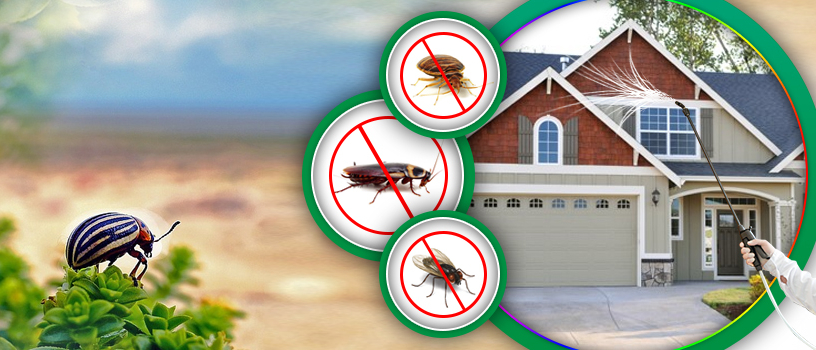Specialist Parasite Control Techniques for Long-Term Results
In the world of insect control, accomplishing sustained efficiency and long-lasting outcomes calls for a precise technique that goes beyond mere extermination. Expert insect control strategies envelop an extensive technique that begins with a complete inspection and analysis, complied with by precise parasite identification to recognize their behavior patterns. The implementation of Integrated Parasite Monitoring (IPM) concepts, paired with eco-conscious treatments, forms the foundation of sustainable parasite removal. Nevertheless, truth test depends on the continuous monitoring and upkeep of the treated areas, guaranteeing a pest-free atmosphere for the direct future. By diving into the ins and outs of these techniques, a much deeper understanding of professional pest control methods for sustaining outcomes emerges.
Inspection and Assessment
Upon entering a residential or commercial property for bug control solutions, the preliminary step is an extensive assessment and assessment to recognize the extent of the problem and determine the most reliable treatment strategy. Expert bug control professionals are educated to meticulously analyze the properties, trying to find indications of bug activity such as droppings, chomp marks, nests, or any type of structural damages. They will certainly likewise evaluate the problems that might be drawing in pests, such as food sources, water leakages, or access factors.

Insect Recognition and Habits

Moreover, comprehending the actions of the identified bug is key to implementing reliable control procedures. Understanding where insects nest, what they feed on, and their task patterns can help pest control professionals create techniques to eliminate them efficiently.
Integrated Bug Monitoring (IPM)
Integrated Pest Administration (IPM) techniques incorporate multiple strategies to control and stop parasite infestations in a sustainable and ecologically friendly manner. Exterminator DC. By integrating methods such as organic control, habitat manipulation, modification of social techniques, and using resistant ranges, IPM aims to decrease making use of chemical pesticides
Among the key principles of IPM is the focus on avoidance. This positive method includes monitoring pest populations regularly to detect any potential concerns before they rise. useful content By determining parasite problems at an early stage, pest control procedures can be applied swiftly and effectively.
In addition, IPM promotes the usage of safe parasite control techniques whenever feasible. This can consist of using natural killers of the bugs, introducing valuable pests, or making use of pheromones to interfere with mating patterns. By decreasing reliance on chemical pesticides, IPM not only safeguards the atmosphere however likewise assists preserve a balance in the community.
Environmentally-Friendly Treatments
Implementing eco-conscious techniques in pest control procedures can effectively resolve invasions while focusing on environmental sustainability. Environmentally-friendly therapies concentrate on reducing the impact of pest control approaches on communities, non-target microorganisms, and human health and wellness. These methods commonly entail using all-natural killers, such as ladybugs or nematodes, to regulate pest populaces, minimizing the demand for chemical interventions. Furthermore, techniques like environment control, such as adjusting wetness degrees or getting rid of food sources, can help prevent parasites without using harmful compounds.
Another secret aspect of environmentally-friendly treatments is using natural and eco-friendly items that damage down promptly without leaving unsafe deposits in the environment. Herb pesticides stemmed from plants like chrysanthemums or neem supply effective insect control while presenting marginal threat to non-target types. Additionally, utilizing techniques like warm therapies or scent traps can target details pests with precision, minimizing the general ecological effect of insect control techniques.
Ongoing Surveillance and Maintenance
Continuous monitoring and upkeep are essential components of reliable parasite control management. Continuous monitoring plays an essential duty in guaranteeing that bug infestations are detected very early and handled without delay. Routine evaluations by experienced experts are required to recognize any indications of insect activity, analyze the performance of previous treatments, and see make changes to the insect control plan as required. By checking insect populaces with time, bug control professionals can track trends, expect prospective problems, and execute precautionary procedures to decrease the risk of future problems.
In enhancement to surveillance, upkeep methods are essential for lasting bug control success. This consists of carrying out correct hygiene procedures to eliminate potential food and water resources for bugs, sealing find out this here off entrance indicate stop bugs from entering the properties, and resolving any type of architectural concerns that might assist in insect problems (exterminator). By including ongoing surveillance and upkeep right into an incorporated bug management method, services can guarantee a pest-free environment and guard their building versus costly damage and health and wellness risks
Final Thought
In verdict, utilizing expert parasite control methods such as extensive assessment and evaluation, exact insect recognition and understanding of their behavior, integrated insect management strategies, environmentally-friendly treatments, and ongoing tracking and maintenance are crucial for accomplishing long-term lead to pest control. By carrying out these methods, people can properly take care of insect problems and maintain a pest-free environment in a sustainable manner.